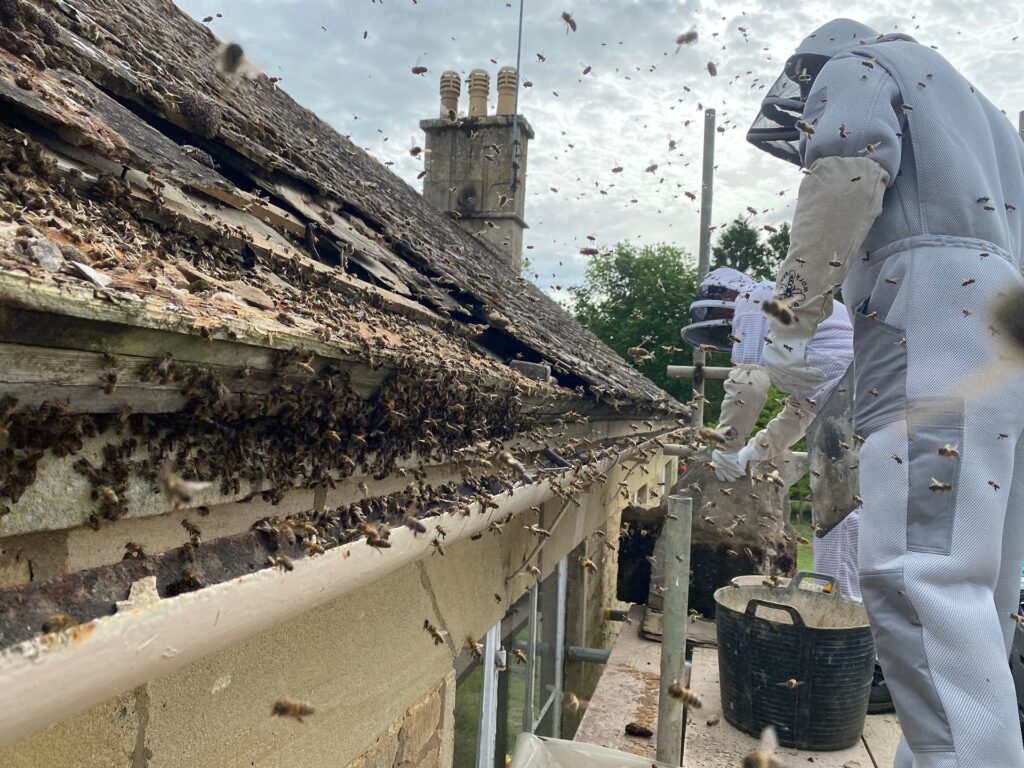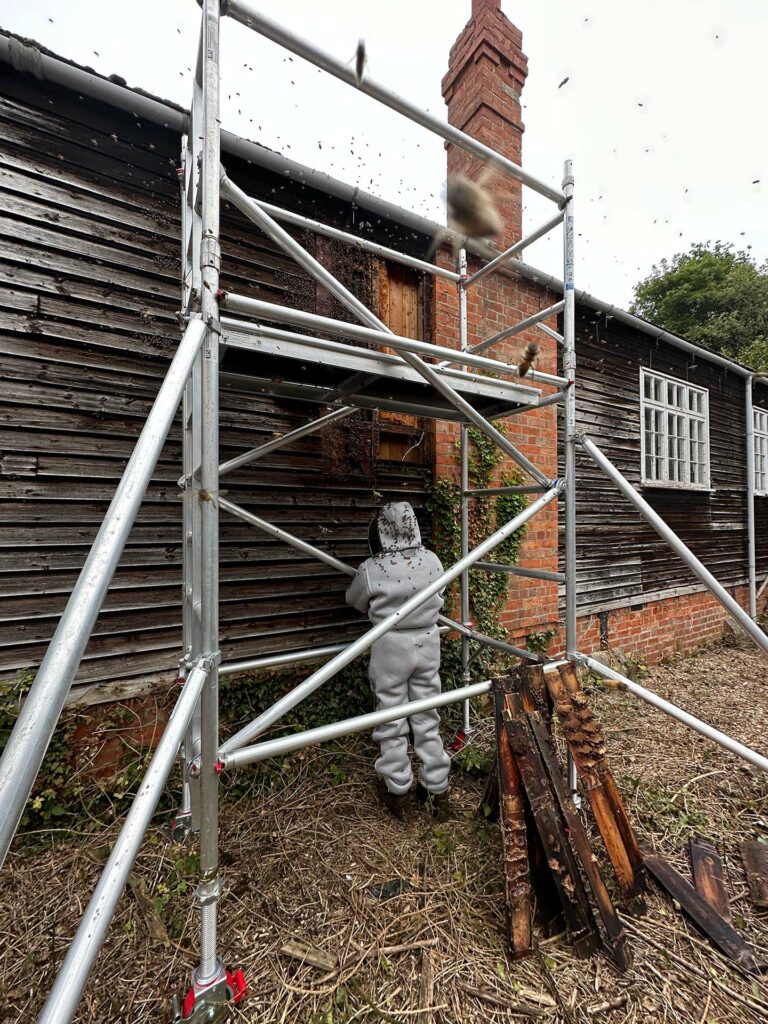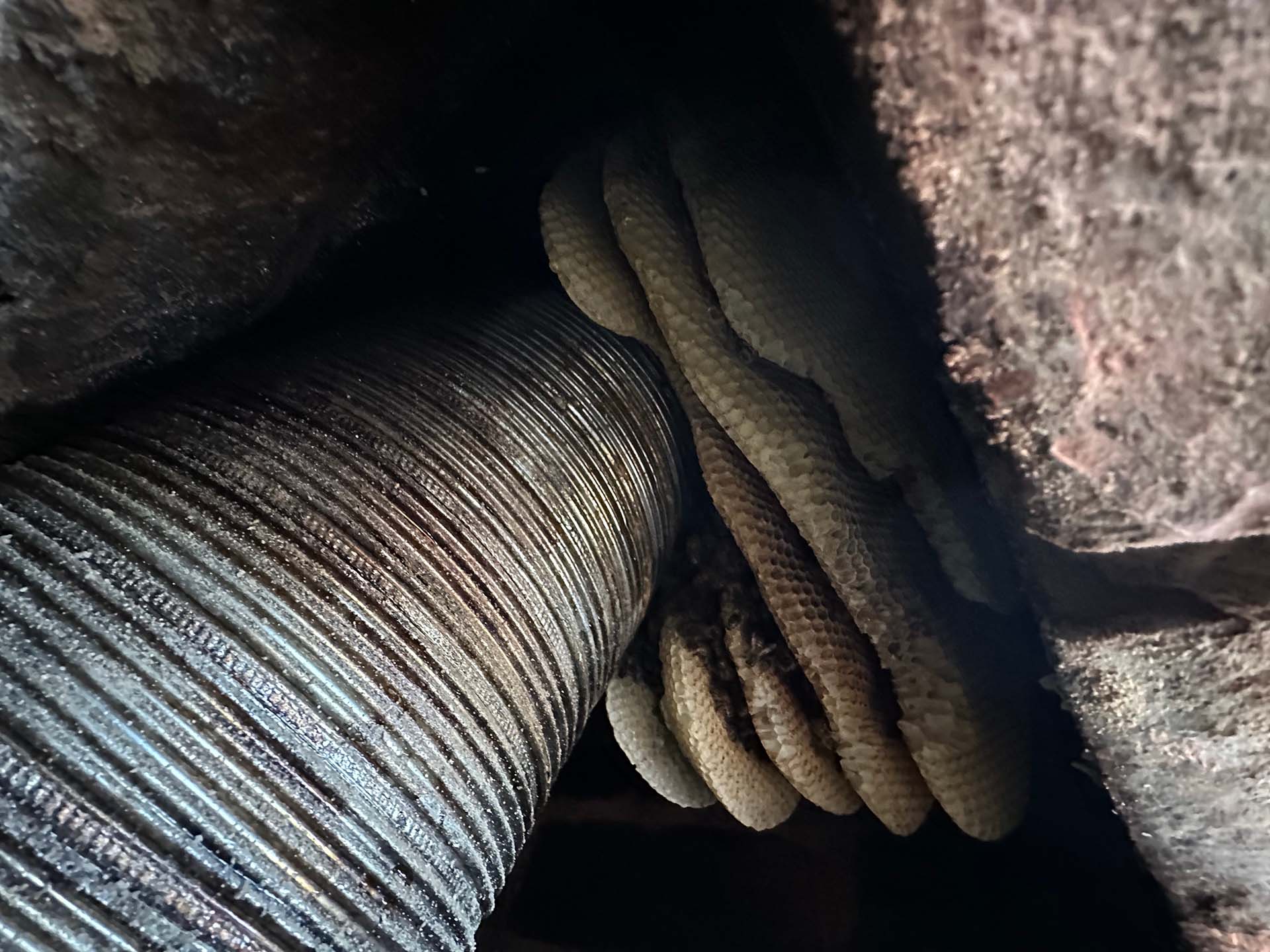Why Live Removal is Preferred Over Eradication for Honeybees
What would you do if you discovered a bee colony hidden within the walls of your home? A colony of honeybees crafting their intricate wax hive unseen. The instinct might be to banish these uninvited guests at any cost, but what if the answer isn’t eradication, but relocation? This article delves into the compelling reasons behind choosing to carefully relocate honeybees rather than eradicate them, highlighting a method that respects both our environment and these essential, industrious pollinators.
The Architectural Marvel of Honeybee Hives
Once honeybees take up residence in a building, they start to draw out fins of comb, a beeswax structure constructed with hexagonal shaped cells that the bees fill with honey and pollen, and also in which the queen lays her eggs. These separate fins of comb are very closely spaced together so bees can just pass between them (the gap is known as a ‘bee space’). The fins are usually constructed perpendicular to the hive entrance, so one fin hangs down directly in front of this in what is believed to be an intentional attempt at draft-proofing to the inside of the hive. This design also helps bees to better guard the entrance and protect the hive from predators. A honeybee colony will continue to produce new comb each year, so the volume of comb can become quite significant over time. This is usually ‘drawn’ backwards and downwards from the entrance, providing an ever growing and ever more complex wax structure.
Moral and Legal Considerations Against Eradication
Whilst bees are not specifically protected in the UK, there is a moral aspect to potentially eradicating large numbers of beneficial pollinating insects. In addition to this, there are no longer any professional-use insecticides approved for use on bees. This is the second key reason we do not eradicate bee colonies, as doing so may be potentially illegal, regardless of the moral considerations. Another reason is that notwithstanding the legal concerns with insecticides, there are practical concerns too. It is extremely unlikely that any liquid or powder insecticide would permeate the hive sufficiently to euthanise all adult bees due to the construction and close proximity of each fin of comb, making it almost impossible for powder or liquid insecticide to be dispensed in such a way and in such a timeframe that it would have any significant and permanent effect. Additionally, in an established colony of honeybees there will also be eggs and capped brood in the comb that would remain unaffected by the presence of any insecticide, at least until they hatch or emerge. With the timeframes involved in each stage of the honeybee lifecycle, any insecticide residue may have little or no effect on newly hatched bees, and this can sometimes result in a subsequent resurgence in activity several days or more after any treatment with insecticide.

Consequences of Leaving the Comb In Place
Simply eradicating a honeybee colony but leaving comb in-situ can result in other issues such as other insect or rodent pest activity (wax moths, ants, or mice etc), or potential comb collapse with wax and honey seeping into the building fabric. Use of any insecticide would also render all comb and bees etc as hazardous waste and pose a potential risk to other bee colonies in the vicinity through robbing, if left unsealed. Honeybees are very good at identifying sources of free food, such as abandoned honey left behind by a colony that has died out and can end up carrying back insecticide-contaminated honey to their hive, with this then ending up in the human food chain or affecting the viability of their colony.
Leaving comb in situ without sealing up all access to this is also likely to attract re-occupation by other colonies in future, as swarming honeybees are often quick to adopt previously vacated ‘homes’ left by other colonies.
The Case for Live Removal
Taking account of all of these complex factors, live removal is really the only viable option in almost every situation where honeybees have taken up residence in an area that might be considered inappropriate or inconvenient by humans such as a house or office building as this removes the ongoing risks posed to persons in the vicinity of the colony.
How We Go About Removing A Honeybee Colony
Before any removal can take place, it is essential to undertake a full survey to identify the exact location of the bees and the extent of comb. We use a range of tools and techniques for this, including thermal imaging cameras, chimney cameras, drones, amongst others.
Once a survey is completed, we can then work up a proposal and quote for removal. Removal usually involves opening up the fabric of the building, either from inside or out, dependent on the location of the bees. Once exposed, all bees and comb can be carefully removed and transferred into a temporary hive adjacent to their previous location. The bees gradually settle into the new home through the course of the day and can then be removed at dusk (as bees stop flying when it gets dark). Once removed, a thorough clean-up can take place before reinstatement works to the building are completed.
Where Can We Remove Bees From?
We have significant experience of removing honeybee colonies from many locations, including chimneys, wall cavities, roof voids, flat roofs, lamp posts, under floorboards and external locations such as hedges, along with many other locations in and around domestic, commercial and public buildings.
Get in Touch
If you have bees in a location that are causing you a problem, we can help.
Contact us today to discuss how we can help you, or to arrange a survey. Our dedicated team is ready to provide you with the professional support and solutions you need.
We offer bee removal services for domestic and commercial premises in Northampton, Daventry, Rugby, Market Harborough, Towcester, Brackley, Wellingborough, Kettering, Corby, Olney and all of the surrounding areas. Call us on 01604 328545, email [email protected] or pop your details into our contact form and we will contact you.


